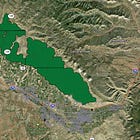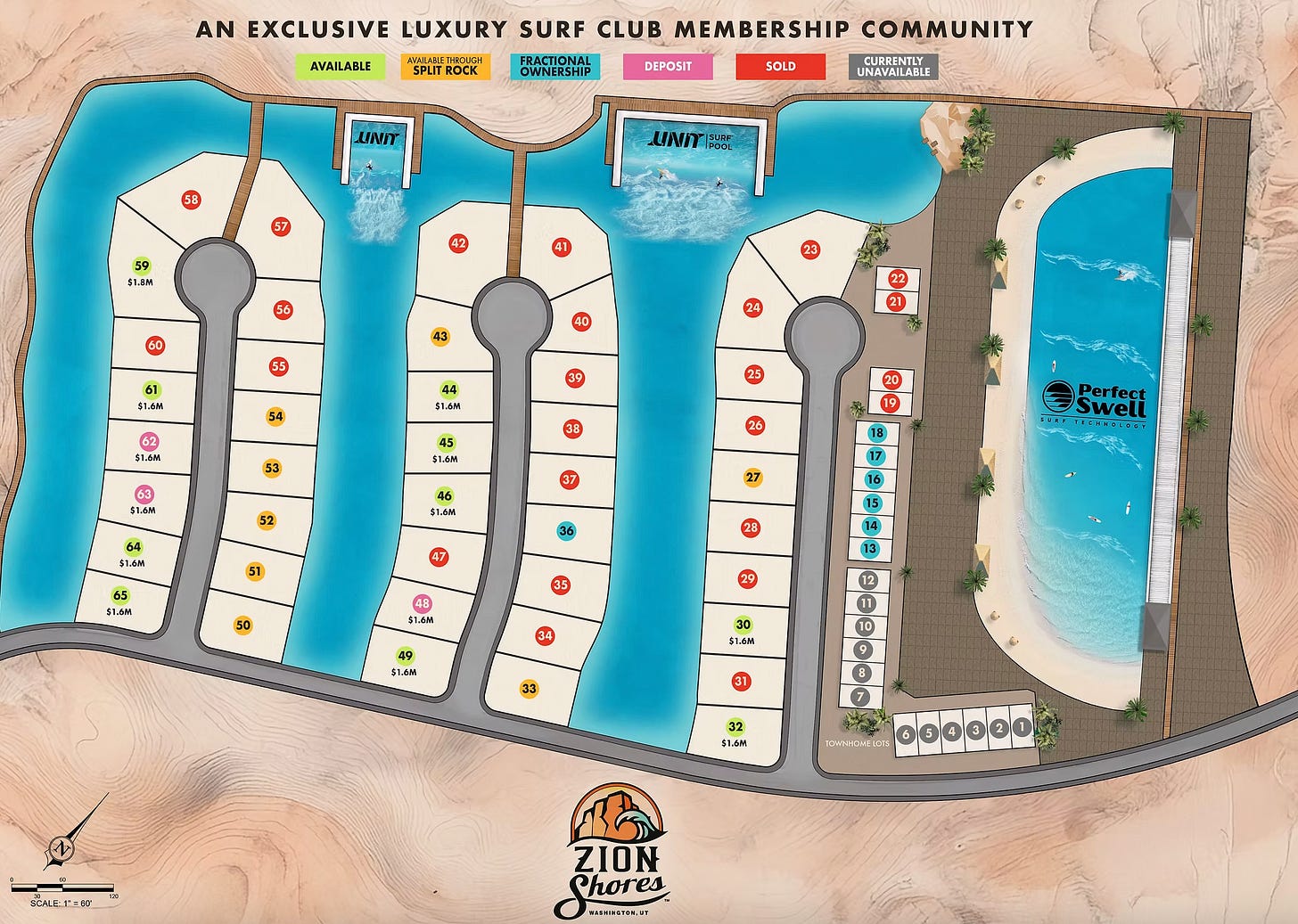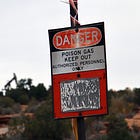Et tu, Cisco? Developer looks to turn Utah "ghost town" into "our town."
Plus: Surfing the desert; Parting shots
🏠 Random Real Estate Room 🤑
I have to say, when Land Desk reader Shannon sent me the link to a planned new development in eastern Utah, I thought it was some sort of joke.
“We strive to create sustainable, truly livable, vibrant communities … ,” Havilah Home’s website promises. But it was the rest of the clause that had me scratching my head: “ … in forgotten places like Cisco.”
Yes, they are talking about Cisco, Utah.
This may not seem too strange if you’ve never been to Cisco or are not otherwise familiar with it. But if you’ve happened to pass through the little burg out in the badlands between the Book Cliffs and the Colorado River, you’re probably as baffled as I am about Havilah’s plans.
See, there just isn’t much to Cisco, which originated as a railroad water stop in the 1880s, grew to a population of about 250 oil drillers and railroad workers and sheep ranchers in the 1940s, and then evaporated into ghost town status after the 1970s construction of I-70, which bypassed the settlement. It was virtually abandoned until 2015, when Eileen Muza bought some of the remaining decrepit structures and established a home and artists’ residency there. Then, a few years later, someone opened the Buzzards Belly General Store in downtown Cisco. But otherwise, it was still a bit ghostly.
About a year ago, the Land Desk reported that Muza had put her 1.36 acres and associated structures up for sale, and had reduced the price to an affordable $75,000. Kara Bard, from Moab, purchased the property earlier this year and revived the Cisco Artists Residency.
The remaining 79 acres of the platted townsite, meanwhile, are owned by Lawrence Hilton, an attorney based in Alpine, Utah, and Havilah’s trustee and developer. It’s here that he and his associates plan to develop a new town, based on the “Ward and Square” neighborhood system pioneered in Savannah, Georgia. It would include about 750 building lots covered in “tiny houses to 3,000+ square foot townhomes,” “generously sized private garages and fenced gardens,” and “open air malls with shops, cafes, & salons.” The master plan map shows not one, but two churches — the denomination isn’t specified — a movie studio1, a school, a sports stadium, and an equestrian arena and stables.
These days, one of the first things we ask when we see plans for a huge development in the desert is: Where’s the water going to come from? The answer, in this case, is from a dreamed-of nuclear power plant that was never built.
During the last uranium and nuclear “renaissance” that began in 2007, Blue Castle Holdings tried to build a nuclear reactor in Green River, Utah. They would have leased rights to Colorado River water from the San Juan Water Conservancy District. After the nuke plans went belly up, the SJWCD cancelled the lease. This July, they filed an application with the state of Utah to lease those same water rights — for 24,000 acre feet — to the “Havilah Homes project” and the City of Green River. Havilah would pull its portion from near the historic Cisco pumping works on the Colorado River.
The Utah Division of Water Rights held a hearing on Oct. 14 and was protested by Bard and John Weisheit of Living Rivers and Colorado Riverkeeper. Although the water rights application points out that the development would use far less water than the nuke plant would have, the fact is, there is no additional water to be had from the Colorado River or its tributaries, and this would represent a net increase in consumptive use, since the power plant was never built. So far the transfer is listed as “unapproved.”
It’s also not clear where the would-be residents of this wannabe town would work —unless the idea is for the new Cisco to be a bedroom community for Grand Junction and Moab, each of which is about an hour’s drive distant. Havilah’s water right application says there will also be commercial, institutional, and industrial uses in the area, though it doesn’t offer details.
The name, “Havilah,” comes from a verse of Genesis, quoted on their website as a place where “there is gold; And the gold of that land is good …” And Hilton co-founded the United Precious Metals Association to help implement a new monetary system in Utah that recognizes gold and silver coinage as legal tender. He’s also general counsel for Quintric, which “combines the best aspects of precious metals, cryptocurrencies, and legal tender into one revolutionary, patent-pending, medium of exchange.” Whether Cisco commerce would be conducted with gold and silver bullion is not clear, though the master plan includes an Alpine Gold Exchange sandwiched between the gas station and WellPath Center.
There are historic gold mines in the area, though they don’t appear to have yielded much. Cisco is, however, surrounded by uranium and lithium deposits, both of which have drawn modern-day prospectors in recent years. So, far, however, the activity has been limited to locating a bunch of mining claims and a bit of exploratory drilling. If mining ever takes off in this area — and that’s a big if — it’s unlikely to employ enough people to warrant building a whole new town.
The whole endeavor is reminiscent of the drive to build brand new “Freedom Cities” in the open spaces of the Western U.S. These developer see the deserts, forests, mesas, and valleys as big blank slates on which they can impose their visions and dreams, never mind the fact that none of these areas are blank or empty, but are all full of life and beauty and history. But then, that’s pretty much the settler-colonial history of the West.
And yet, Havilah’s plan may not be the moment’s goofiest development proposal in Utah. No, that distinction probably goes to Zion Shores, “an exclusive luxury surf club membership community” under construction in Washington, a sprawling quasi-city sandwiched between St. George and Hurricane.
The 30-acre development will include 65 homesites, each of which is listed for $1.5 million — umm, that’s without the house, of course — and a 9 acre “pool-quality water lagoon” complete with surfing waves. Not only are they surfifying the desert, but their also continuing the ongoing gentrification thereof.
The developers say the surfing lagoons will consume about 30 million gallons of water per year, but that they will be “filled with non-potable brackish water from private onsite wells. Brackish water has a high salt content that is unfit for drinking or irrigation use, but when treated, is perfectly safe for recreational use. We will not be using any public water supply to fill our surf pools or lagoons.”
That’s all and good, but it skirts the fact that groundwater aquifers, even brackish ones, are connected to surface water supplies. And drawing down those aquifers will also have an effect on the nearby Virgin River, a tributary to the Colorado River.
Zion Shores won’t be unique. It is being developed by the same folks who built the existing Southern Shores surfing development, also in Washington County. Watch “Dixie Dan” talk about that development in the video below — if you dare (you can pretty much see the evaporation of precious water taking place).
🤗 Good News Department 🌞
I tend to give Utah elected officials a hard time, in part because most of them — e.g. Sen. Mike Lee — are batshit crazy, set on pushing a theocratic agenda, intent on privatizing and mining and grazing and drilling public lands, and lack the critical thinking skills to see that bowing down to Trump is weak and bad for them and their constituents. But I also give credit where credit’s due, and I gotta say, I kind of like the state’s plan to build a 3,100-mile network of paved walking-biking trails that would span the state.
It will take a while to build the 2,600 miles of new trails to add to an existing 500 miles. But the idea of someday being able to ride my bike from Bluff to Salt Lake City without ever having to battle motorized traffic sounds pretty cool. Of course, you know as well as I do that someone will try to allow OHVs on these things at some point. I mean, this is Utah, after all.
⛏️ Mining Monitor ⛏️
Federal and state officials seem to be intent on cementing southeastern Utah’s Lisbon Valley’s status as a national sacrifice zone. Not only is that the location of the Velvet Wood Uranium Mine, for which Anfield is holding a groundbreaking ceremony next week, but it is also the site of the Lisbon Valley Copper Mine.
Earlier this week, the Environmental Protection Agency approved the mine operator’s aquifer exemption request, which would allow them to expand the open pit operations and conduct in-situ operations.
The company plans to build some 1,700 wells for injecting a mix of sulfuric acid and dissolved oxygen into the ground. That reacts with iron in the rock to form a lixiviant — or leaching solution — which dissolves the copper. The leachate solution, now “pregnant” with copper, would then be pumped to the surface and piped to the company’s electrowinning processing facility.
While the process is less damaging than open pit mining, there is a danger of the leachate solution drifting away from the mining area and contaminating other parts of the Burro Canyon aquifer, or crossing into the adjacent Navajo aquifer, which in turn could affect nearby wells. That prospect is raising concerns among a handful of other Lower Lisbon Valley residents, who live just outside the proposed expansion zone.
The proposal still needs state regulators go-ahead before construction can begin.
📸 Parting Shots 🎞️

Cisco has served as a backdrop for numerous movies over the years, from Thelma and Louise to Wim Wender’s Don’t Come Knocking. But somehow I think that it will be far less interesting to film directors once it becomes a suburban neighborhood.








Unreal! Is this just a distraction from the Kane Creek Preservation and Development and G&H Miller Family Holdings of the Echo Canyon development which has been simmering for the last couple of years and has been pretty quiet lately? Probably not. Just another dangerous, wacko idea from the west side of the Wasatch Range.
Ugg. Unbelievable on so many levels.